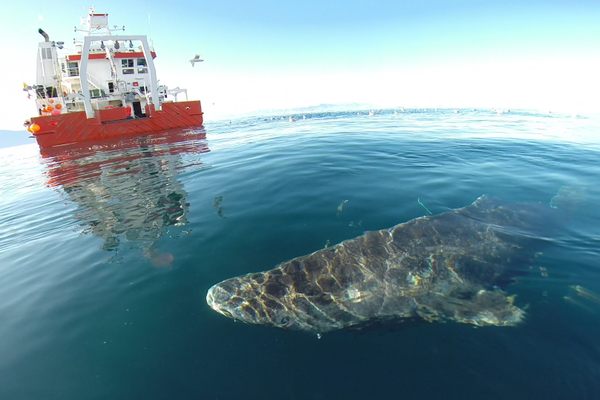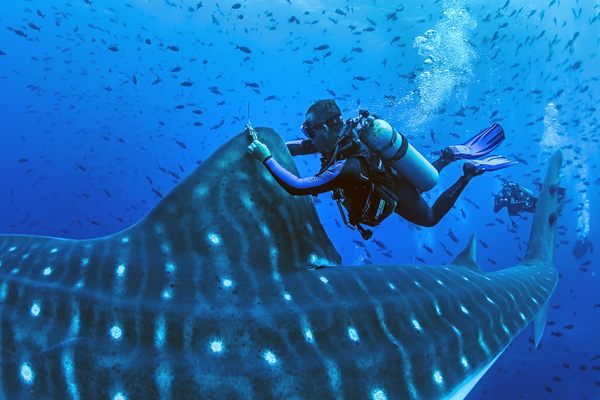The Lazy Zeppelins and Breakneck Boeings of the Shark World
Aircraft make surprisingly good analogues for the variety of sharks out there.

Imagine a zeppelin and a Boeing 737 in the sky. The zeppelin glides along through low clouds, rotund and lighter than air. Much higher up, the heavy plane zips by at high speed, guzzling fuel to stay aloft. In the ocean, something very similar takes place—among sharks. In the frigid depths, where nutrients are scarce and light even scarcer, the rare bramble shark drifts lazily along—like a zeppelin. Almost 3,000 feet farther up, near the surface, whaler sharks zoom past, with wing-like fins lifting them in the water while their tails push their pace. To the bramble shark’s blimp, they are jets—with a similar appetite for fuel.
According to a new paper published in Proceedings of the Royal Society B, sharks have developed a range of physical attributes that line up well with those of aircraft. And these variations are in more than just shape.
All sharks once had large, fatty, buoyant livers and lived near the bottom. As they evolved, some livers shrunk, which made life closer to the surface possible. Researchers investigated the body composition of some 32 shark species and found that more buoyant sharks, such as the bramble shark, slide slowly through the water, with fatty livers that make up more than a quarter of their body weight. Much like zeppelins, “[they] cruise near effortlessly at low speeds to save energy,” Adrian Gleiss, lead author of the paper, from Murdoch University Centre for Fish and Fisheries Research, said in a statement. Negatively buoyant sharks, such as whaler sharks, are different. To remain afloat, they must motor through the water to generate lift, which requires a great deal more energy than their cousins below require. “For an animal to be wasteful with its energy expenditure should interfere with survival unless it would prove beneficial in some other manner,” said study coauthor Jeremy Goldbogen of Stanford University-Hopkins Marine Station.
And indeed it is. Deep-dwelling sharks are round and bulky, while sharks in the shallows are sleek and javelin-like—the better to cut through the water, cut down on energy consumption, and keep pace with rapid surface prey. “The zeppelins of the shark world must live in cold places where slow swimming is the rule for both predator and prey,” coauthor Jean Potvin of Saint Louis University said. For these sharks, more agile fish or squid are more or less off the menu—everything down there moves more slowly. Conversely, a fleet surface shark would never find enough fuel down there to keep going. In the great big ocean there’s a place for both blimps and fighter jets.



















Follow us on Twitter to get the latest on the world's hidden wonders.
Like us on Facebook to get the latest on the world's hidden wonders.
Follow us on Twitter Like us on Facebook